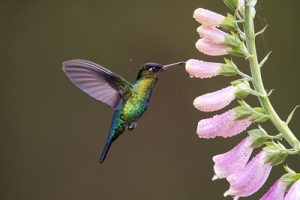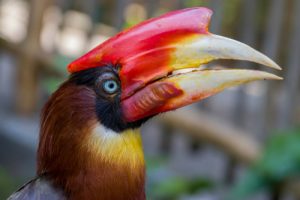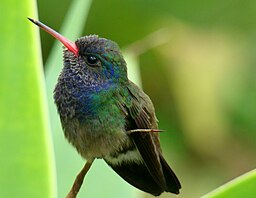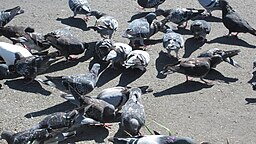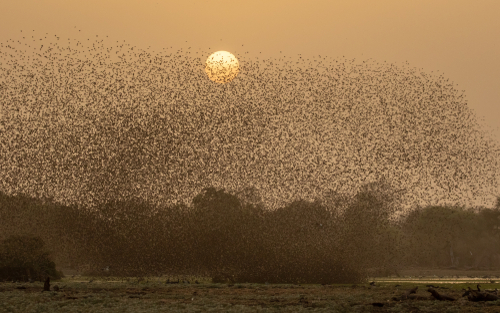
The unanticipated tale of the Red-billed Quelea
Have you ever wondered what is the commonest bird in the world?
Fowl Play
It might come as no surprise that theoretically speaking the commonest bird in the world is the domestic chicken. The population of chickens throughout the world is estimated by some sources to be as high as 50 billion. Of course, there are hundreds of sub-species of chicken, which come in a great variety of sizes, shapes and colours. So, I think in the search for the world’s commonest bird it seems fair to disregard the chicken. We can do this on the grounds that it’s not only domesticated but it’s also far from being anything like a homogeneous species.
Have you heard of the ‘red-billed quelea’? It’s a rather striking, sparrow-sized bird with a brown body and a normally red bill. The exception to this is that a breeding female’s bill turns yellowy-orange. It is this small, finch-like species that are notorious for being more abundant than any other bird population on the planet.
The red-billed quelea, also known as the red-billed dioch, is a member of the weaver family and can be found all over sub-Saharan Africa. They are a very social bird and a single flock can run into the millions. Estimates of their universal population are quoted by reliable sources as being some 1.5 billion birds.
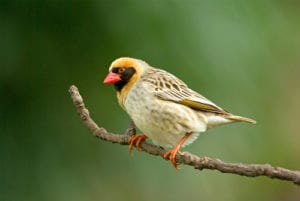
A male red-billed quelea. Image credit: Linn Currie/Shutterstock.com
A Breed Apart
The main reason for the quelea’s great numbers is its remarkable breeding success. Different populations have different breeding seasons throughout the year. This means there is no seasonal peak population, which reduces some of the competition for food and nesting sites. Additionally, birds usually breed twice a year, but in exceptional cases, it may be three times. According to experts, an average of 2.3 chicks survive to leave the nest from a typical batch of 3 chicks.
The range of the quelea’s habitat extends across more than 75% of the African continent. This area stretches from Senegal in the West, across to Sudan in the East. Southwards, it takes in the whole of the Savannah of South Africa’s Transvaal region. It is difficult for most people to imagine the magnitude of the quelea population. During night roosts it’s not unusual for a whole tree to collapse under the sheer weight of numbers of the 20 g bird. It was estimated on one occasion that a single quelea roost observed in Sudan comprised of some 32 million birds. Their numbers are so prolific that on average more than 500 birds will nest in one tree.
Feathered Friend or Foe?
However, the quelea is not only the world’s most abundant bird. It is also the world’s most significant avian agricultural pest. The crops which are particularly favoured by the quelea are wheat, sorghum, millet, and rice. On average, each bird consumes about 4 grams of seed per day. However, it also displaces another 8 grams during the feeding process. An evaluation of the continent-wide damage caused by the quelea is more than 1% of Africa’s total cereal production. While this might not seem an awful lot, it can often spell disaster for thousands of unlucky subsistence farmers. Should the quelea choose to feed on their patch, they can lose an entire year’s food supply.
The numbers of quelea taken by its natural predators, other than humans, are minuscule. Furthermore, its breeding grounds are largely inaccessible to man. The only workable method of population control of the bird is simply to kill them. Flame-throwers, dynamite bombs and aerial spraying of poisons and detergents are the main methods employed to exterminate them. It’s estimated that up to one billion individual birds are eradicated in some years. However, with another 500 million birds surviving, given their rampant fertility, it’s not long before the quelea’s numbers have recovered to previous levels.
Header image credit: Willem in Africa/Shutterstock.com
